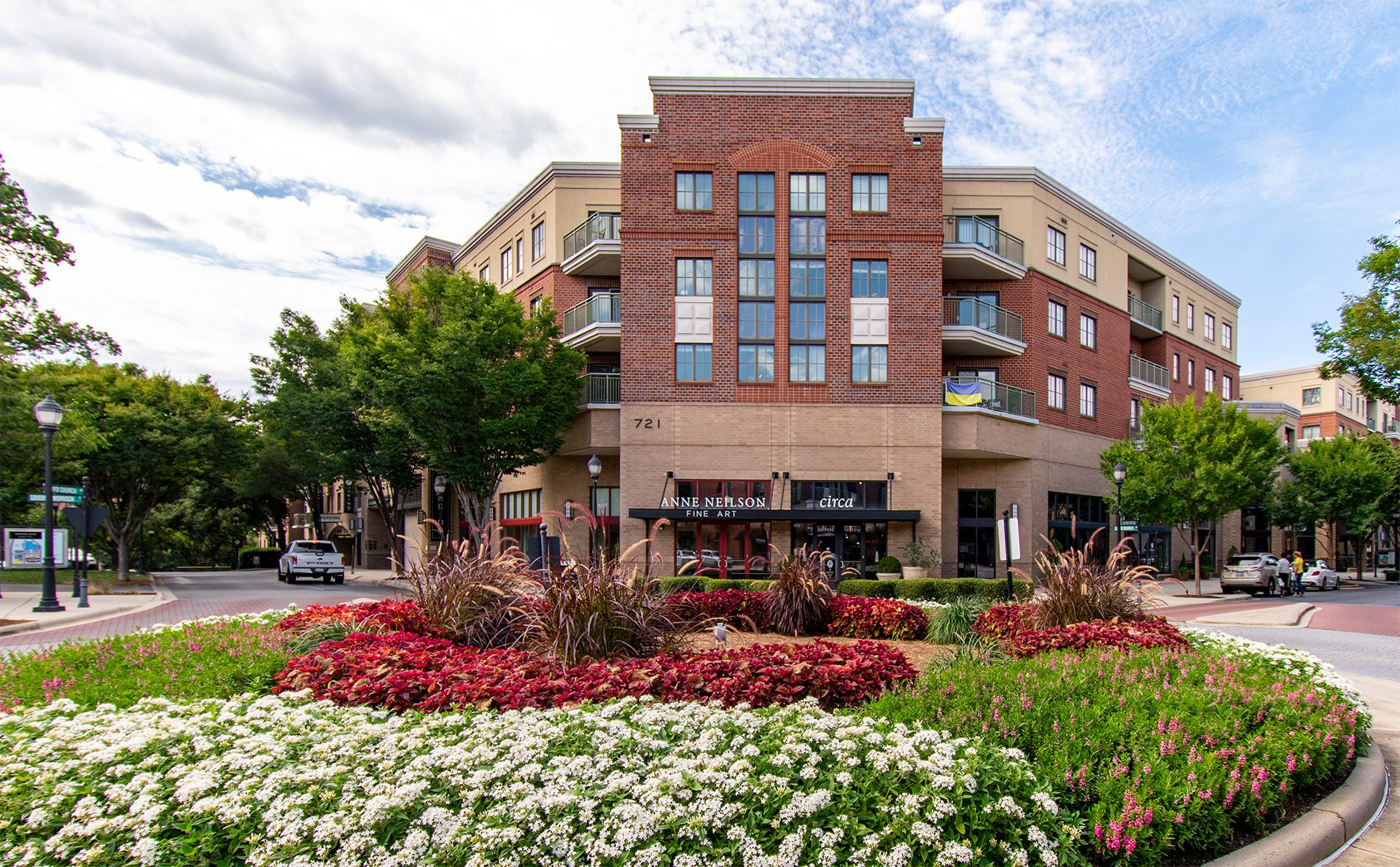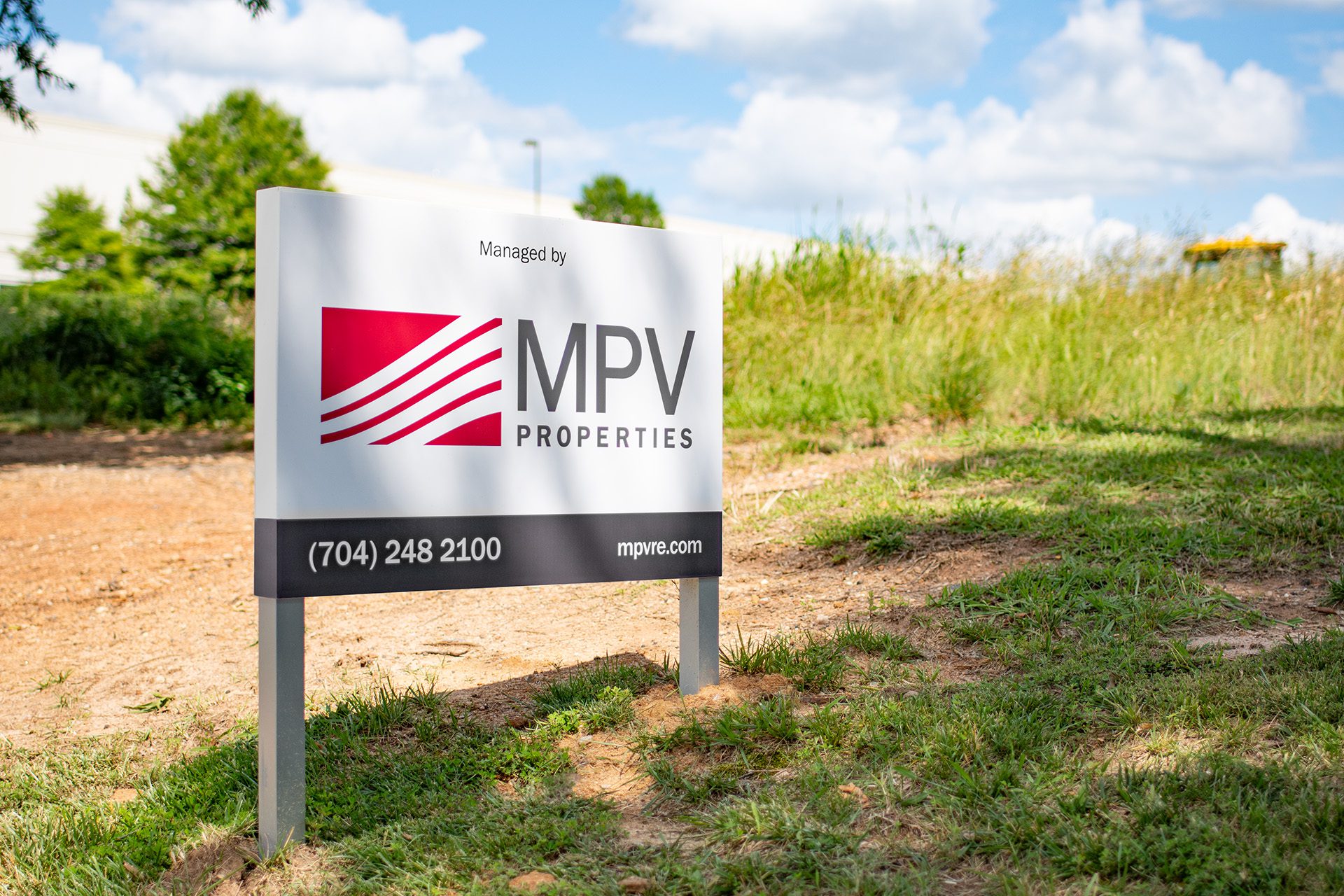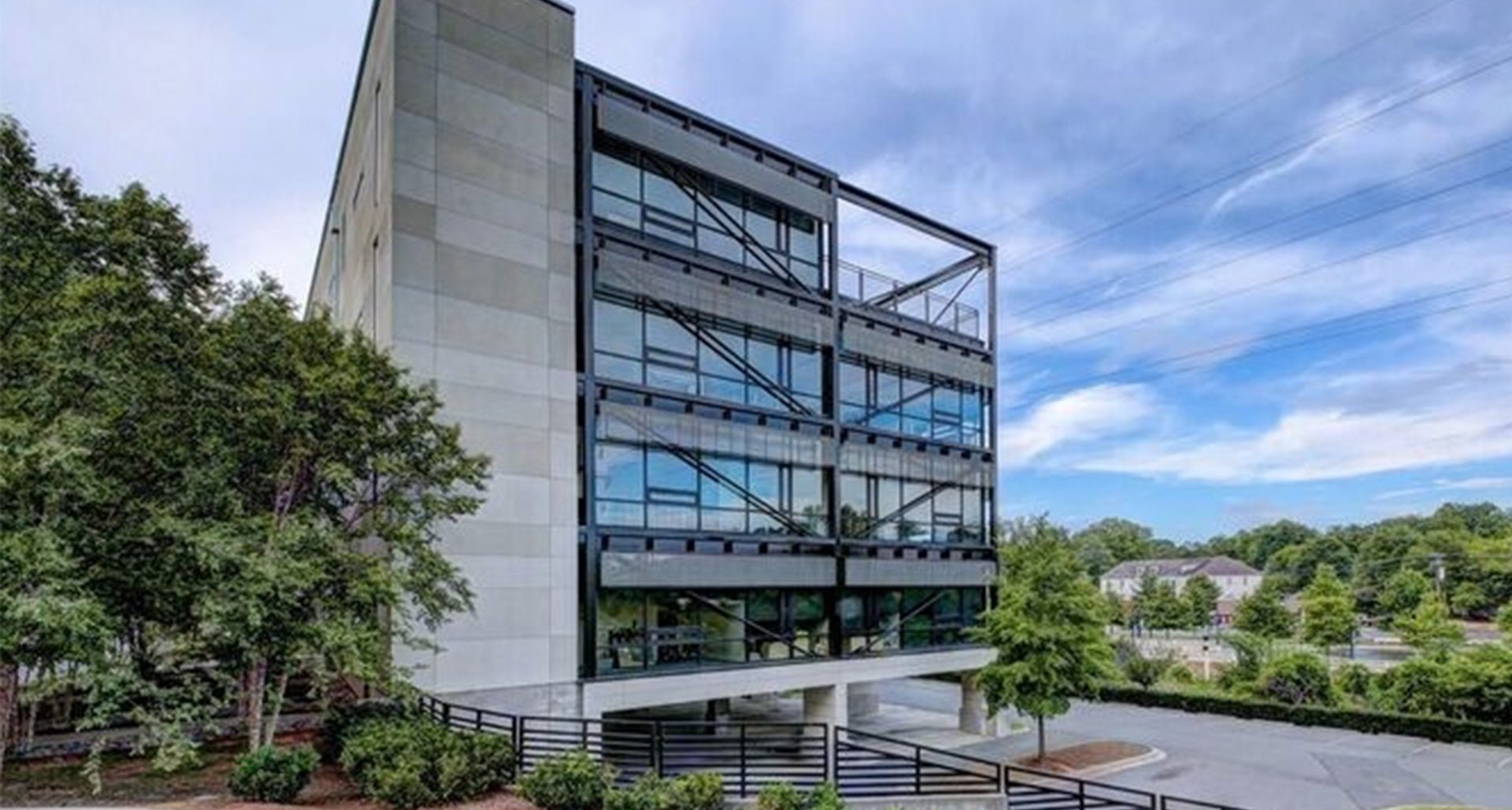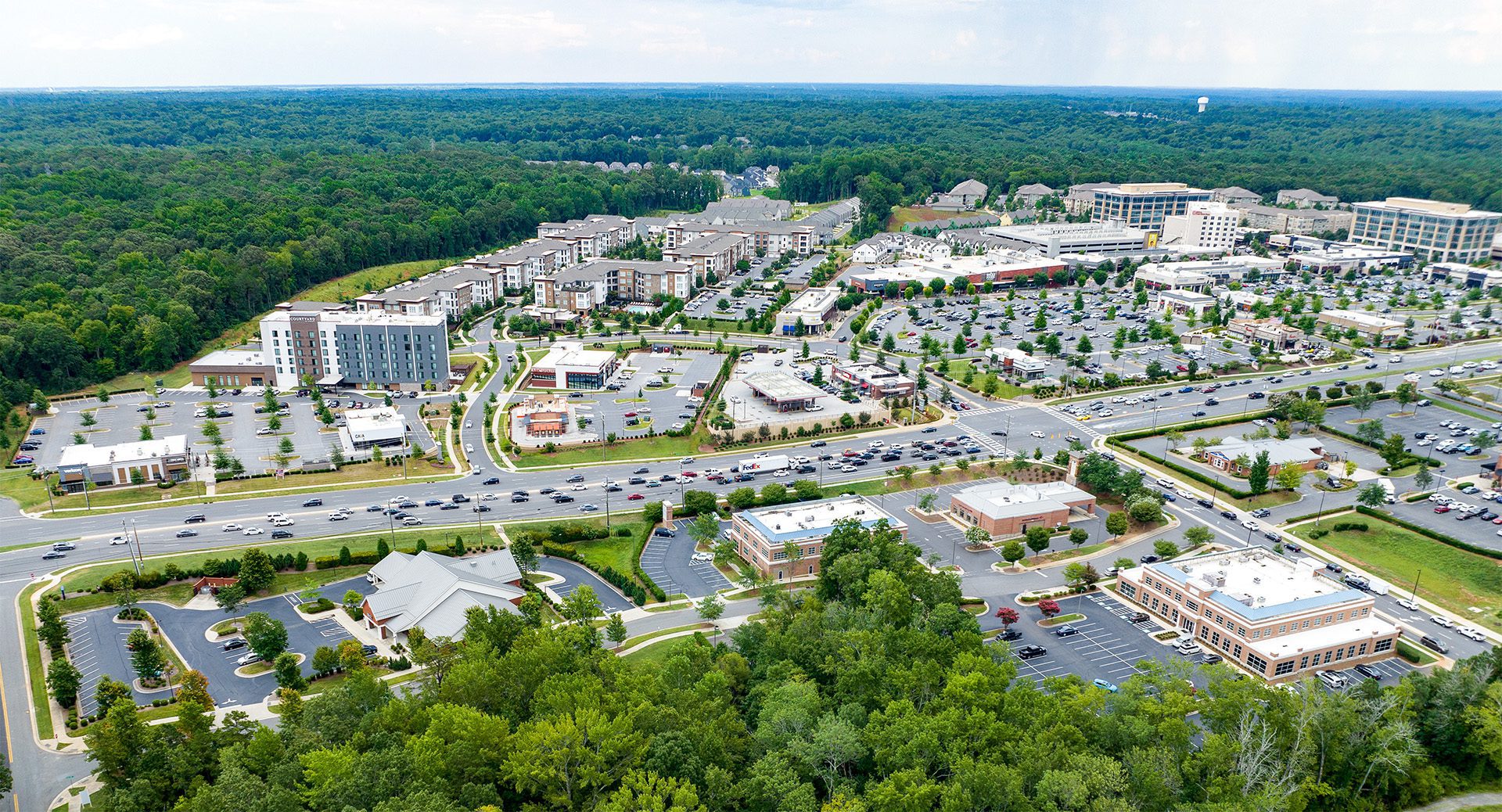Picture it: you drive into a business park for a doctor’s appointment. The grass is beautifully kept. The flower beds are newly planted with a seasonal arrangement. A landscape company is busy laying down a fresh layer of pine straw. You pull into the clean parking lot and into a well-kept lobby with polished floors and an easily read building directory. Your day is off to a good start!…
…Now imagine the opposite: upon arrival at your destination, you notice several dead patches of grass and unkempt bushes, which partially block the building signage and cause you to nearly miss your turn. The parking lot is in poor condition, and you search for a space that doesn’t have a pothole with standing water to avoid upon exiting your vehicle. The trash bin at the entry smells like it hasn’t been taken out in weeks, and there is a musty smell when you enter the building. You hate going to the doctor.
What if you were the doctor in either of these scenarios—or the property owner, or both? While the layperson may not be aware of what commercial association management entails, it is surely noticed when it’s not done well.

What is commercial association management?
Commercial association management is the upkeep of commercial (think retail, office, medical) common area. Shared amenities can include bathroom facilities, parking lots, lighting, landscaping, and water features, all of which need to be maintained. There can be multiple owners responsible for those items in a multi-tenant building or office park. Commercial association management exists to make the coordination of these owners streamlined, and ideally, easier. There are two types of Commercial Real Estate (CRE) associations:
Condominium Associations (COA’s) are responsible for all shared building features outside of an owner’s unit, such as the entry to the building, waste receptacles, elevators, and hallway restrooms.
Property Owner’s Associations (POA’s), on the other hand, come with a varied range of shared property amenities including utilities, parking lots, lighting, landscaping, and water features.
This is a short list of items that require budgeting, oversight, and maintenance—and that’s where a commercial association management team comes in. If they’re doing their job well, you may not even notice the results—because the buildings, parks, and their shared spaces are well-maintained, functional, and consistent throughout the property, creating a seamless experience for everyone.
“For the property owner, the key objective of Association Management is the preservation and enhancement of investment value, and making sure millions of dollars’ worth of assets perform well as a place to do business and as an investment for all stakeholders,” says Ian Bruce, Director of Association Management at MPV Properties.
And when it comes to association management, he believes it is crucial for the financial health of the property to take a specialized approach. “It’s not for the faint of heart,” said Bruce. “You’ve got to have the technical expertise to understand the issues, the people skills to explain it to everybody, and the budgeting skills to make it all work financially.”

Why not DIY with software?
Limitations
While software can provide administrative support and simplify certain responsibilities, managing commercial associations via technology has major limitations. Existing property management software falls short when it comes to commercial association management. “It’s different than managing a leased building,” says Sheila Proctor, Senior Association Manager at MPV Properties. “It’s not a lease—it’s owned asset management. Off-the-shelf software does not do what owners need to see.”
Expecting the Unexpected
According to Proctor and Bruce, it’s important to be aware of non-building related issues that need to be accounted for that would not be baked into your standard Property Management software. For instance, business parks often feature specialized amenities that present unique challenges. Stormwater detention facilities require knowledge of and adherence to local and State regulations and strategic financial planning in anticipation of potential maintenance issues in order to avoid an unexpected bill down the road. Many jurisdictions impose hefty fines for failure to comply with applicable regulations. An experienced management team will know how to navigate these types of amenities and ensure the correct budgeting for contingent liabilities.
“Stormwater facilities could otherwise present an organization with a huge financial shock that no one is prepared for,” said Bruce. “That’s the beauty of a specialized team. It allows for a quick response with a dedicated team of vendors and budgeted funds to take care of just about any scenario.”
The MPV Properties commercial association management team is currently responsible for the upkeep of approximately 30 stormwater facilities throughout the region. Our comprehensive maintenance program leverages partnerships with third-party inspectors and includes detailed monthly maintenance services to protect those assets and property owners.
Eyes on the Prize
Finally, Association Management also requires someone to get out and walk the property on a regular basis, which cannot be done from a desktop. And when issues do arise, an experienced team will have a trusted team of vendors available to address any scenario. Their quick, thorough response helps preserve property values for all owners.

When is the right time to hire a commercial association management team?
When commercial association management tasks aren’t streamlined through one team, planning, maintenance, and other tasks may end up overly complicated, inconsistent, or even overlooked. Consider seeking support from a commercial association management team if you’ve encountered extensive issues with your current management—from weak budgeting models to incorrect expense allocations to inadequate investment in reserves. According to Bruce, additional red flags include unexpected invoices, lack of proactive management, challenges finding vendors, and inadequate maintenance. If you find yourself confused about legal, financial, or other issues but can’t seem to get transparent answers to your questions, that’s also a sign that you may benefit from specialized support. A skilled commercial association management team can help you correctly structure, budget and organize the association to ensure its success.
Real World Example
When MPV Properties took over management of The Watermark, a 30,000-square-foot, class A professional office condominium building in the midtown Charlotte market, their team soon discovered that the HVAC system was ineffective. Due to the amount of glass used in the structure, the original HVAC system was not compatible with the building’s design, leading to significant solar gain in the Summer, and heat loss in the Winter. These temperature control issues drove up utility costs and resulted in an uncomfortable work environment year-round, which could be off-putting for potential owners.

The commercial association management team stepped in to fix the issue head-on, contributing their experience and skills to identify the problem with the system, educate all unit owners on the issue, present a solution, secure owner approval, update the condominium Declaration, and implement the solution within the approved budget. As a result, the building was more comfortable for owners and guests, increased its value, enhanced its reputation, and reduced its utility bill.
Whether you’re at the beginning of a development project or your property is at the end of its first life cycle, it’s vital to be proactive. When a building or park reaches 20 to 25 years, the building systems and park amenities need replacing and refreshing. If there’s not already a plan in place for accomplishing that, a commercial association management team can oversee the process. “There’s a breadth and depth of expertise we offer for folks who are generally unaware that this service is out there,” says Bruce. “If you set it up wrong, it is difficult to get it back on track. With fragmented ownership and no dedicated leadership, everyone will have view on how it should be moving forward but it is difficult to gain consensus and implement a plan.”
“Set it up right, and you’re set for the next 30, 40, 50 years.”



